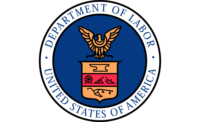A NIOSH Science Blog post
Partnering to educate English-language learners in Alaska on worker safety and health

When you think of diversity in the United States, does Alaska come to mind? In fact, Anchorage, Alaska has some of the most ethno-racially diverse neighborhoods and public schools in the entire U.S. This diversity includes nearly one in ten Anchorage residents identifying as foreign born (Farrell, 2018). In terms of languages spoken in the city, the Anchorage School District has identified over 100 languages that are spoken either by its English-language learners as their first language, or by these students’ families (Hanlon, 2016).
In the U.S., English literacy plays an important role in public health and workplace safety and health. The Centers for Disease Control and Prevention has noted that people need health literacy skills in order to:
- Find information and services;
- Communicate their needs and preferences and respond to information and services;
- Process the meaning and usefulness of the information and services;
- Understand the choices, consequences, and context of the information and services; and
- Decide which information and services match their needs and preferences so they can act (CDC, 2016).
Addressing diversity and English literacy in the workplace
Throughout the U.S., some workers face increased risk for occupational fatalities, injuries, and illnesses as a result of social and economic structures historically linked to discrimination or exclusion (also known as occupational health inequities). Language differences between immigrant workers and their supervisors and coworkers are one of the most frequently cited challenges that companies face in promoting safety among immigrant workers (Gany et al., 2011). For example, language barriers are a major challenge in Alaska’s seafood processing industry, in which people arrive from around the world to work in the highly-seasonal industry (Syron et al., 2019).
In 2018, the NIOSH Western States Division joined the Anchorage Health Literacy Collaborative, with the hope of incorporating a worker safety and health perspective into broader discussions on health literacy (Johnson, 2019). The Alaska Literacy Program (ALP) and the University of Alaska brought together public, business, and non-profit partners in the region to create this Collaborative in 2007. ALP is a volunteer-based, non-profit organization that has provided English literacy instruction including reading, writing, and speaking to adults in the Anchorage area for 45 years. Currently, ALP’s adult learners speak 33 languages, ranging from Spanish and Arabic to Bislama and Tigrinya. In 2019, ALP served 350 adult learners, about 50% of whom were employed and 20% of whom were looking for work. The U.S. Department of Labor provides one source of funding for ALP, with a goal of developing the workforce’s skills and self-sufficiency (Alaska Literacy Program, 2019).
Partnering to adapt NIOSH’s resources
ALP hosted its annual Health Day in April 2019. During this event, five groups of 12 adult learners rotated through a series of 25-minute educational sessions on a variety of health topics. For Health Day, an epidemiologist from NIOSH Western States Division contributed a session on worker safety and health.
Developing the session involved collaboration between partners. First, the epidemiologist identified various educational materials that could be adapted for ALP’s adult learners, who represented a variety of languages and literacy levels. Two NIOSH products immediately came to mind because they included excellent graphics, which are helpful for English-language learners:
Youth@Work—Talking Safety. This curriculum, maintained by the NIOSH Safe • Skilled • Ready Workforce Program, was developed over many years by a consortium of partners dedicated to reducing occupational injuries and illnesses among youth. It is a fun, free, and engaging curriculum meant to be used in a classroom or other group training setting. It has been customized for each state and several U.S. territories, and is available in Spanish. The curriculum includes a step-by-step guide for teachers for presenting the material, PowerPoint slides, and a video testimonial from a young worker injured on the job.
Protéjase en el trabajo (Protect yourself at work). This series of multi-media communication products was developed for organizations that serve Spanish-speaking immigrant workers. Illustrated materials for workers were created through community outreach, engagement, and input. The purpose of these materials is to provide evidence-based information to raise awareness about potential occupational safety and health issues and encourage workers to seek assistance for work-related questions or concerns.
Next, the epidemiologist met with ALP’s Curriculum Specialist and a Spanish-speaking adult learner to review the various resources. They agreed it would be great to incorporate aspects of Talking Safety and Protect Yourself at Work into the session. Finally, the epidemiologist sought feedback from her colleagues at NIOSH who had created Talking Safety and Protect Yourself at Work.
Everyone agreed it would be critical to educate ALP’s adult learners on their rights as workers. The resulting session included “Find the Hazards” activities, key vocabulary, and the local resources available to help workers understand and enforce their right to a safe workplace.
Long-term impact
By partnering with ALP through the Anchorage Health Literacy Collaborative, NIOSH provided immigrants and refugees in Anchorage with an opportunity to simultaneously learn English and workplace safety and health principles. After Health Day, during the summer of 2019, ALP staff and teachers began integrating NIOSH’s resources into their classes at every English level, including introductory-level classes. Staff and teachers were excited to have a new user-friendly resource to empower their adult English-language learners.
We would like to hear from you. Click here to visit this blog post on the NIOSH website. In the comment section below the post, please tell us your experiences with English-language literacy, diversity, and workplace safety and health.
For more information
This article provides a guide for practitioners and researchers on the key factors to consider when designing and implementing occupational safety and health training programs for under-served communities. It also addresses evaluating such programs, with specific emphasis on considerations for programs involving low-literacy and limited-English-speaking workers: O’Connor T, Flynn M, Weinstock D, Zanoni J. (2014). Occupational safety and health education and training for underserved populations. New Solutions, 24(1): 83-106
The CDC’s Health Literacy site provides information, tools, and links on health literacy research, practice, and evaluation for public health topics and situations.
References
Alaska Literacy Program. (2019, October). Fiscal Year 2019 Report.
CDC. (2016). What is Health Literacy? Retrieved from: https://www.cdc.gov/healthliteracy/learn/index.html
Farrell CR. (2018). The Anchorage mosaic: Racial and ethnic diversity in the urban North. In Barnett, J.K. & Hartman, H.C. (Eds.), Imagining Anchorage: The making of America’s northernmost metropolis (pp. 374–391). Fairbanks, AK: University of Alaska Press.
Gany F, Dobslaw R, Ramirez J, et al. (2011). Mexican urban occupational health in the U.S.: A population at risk. Journal of Community Health, 36(2):175-179.
Hanlon T. (2016). From Hmong to Sinhalese, over 100 languages are represented in Anchorage schools. Retrieved from:
Johnson RM, Shepard L, Van Den Berg R, Ward-Waller C, Smith P, & Weiss BD. (2019). A Novel Approach to Improve Health Literacy in Immigrant Communities. HLRP: Health Literacy Research and Practice, 3(3):S15-S24.
Syron LN, Bovbjerg VE, Mendez-Luck CA, & Kincl LD. (2019). Safety and Health Programs in Alaska’s Seafood Processing Industry: Interviews with Safety and Health Managers. Journal of Agromedicine, 1-13. https://doi.org/10.1080/1059924X.2019.1639578
Looking for a reprint of this article?
From high-res PDFs to custom plaques, order your copy today!







.jpg?t=1721257160)
